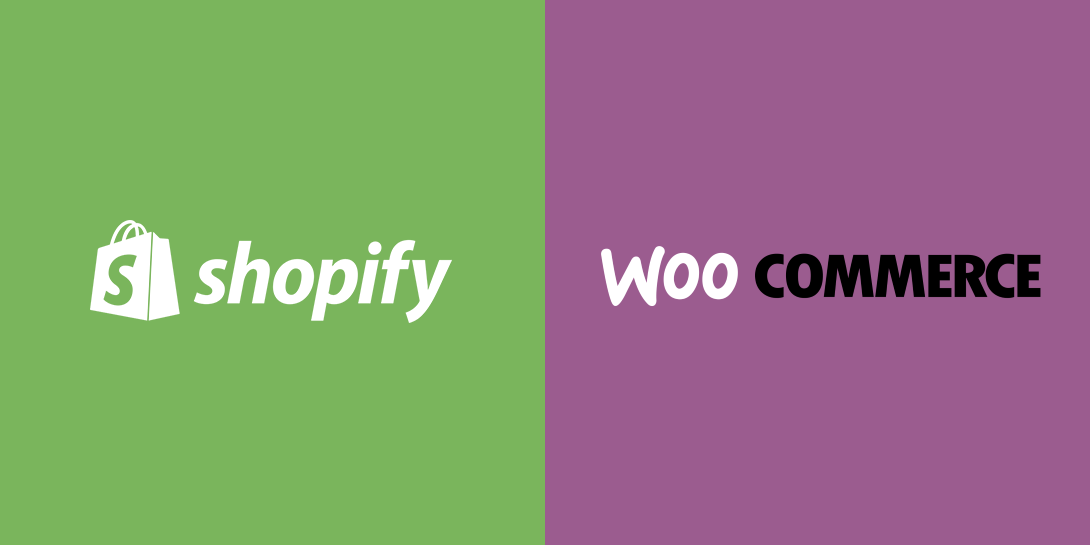If you want to start an online store, but not sure whether you should go with Shopify or WooCommerce. I’m going to go into a detailed comparison on the pros and cons of each. And as someone who’s built his career, focused on building the best online experiences on the web, I commonly get asked, What’s the best e-commerce platform since there are so many?
My short answer is Shopify, it’s most powerful reliable, easy to use, and built with amazing customer support and not to mention allows you to scale your business without worrying about scalability issues. Though WooCommerce has a bit of a steeper learning curve. It certainly has a range of its amazing benefits. First of all, you’re building an online store on top of WordPress seo experts, which is one of the world’s most popular content management systems.
And not to mention, especially as a web developer, I have unrestricted customizations. So with WooCommerce, it’s an open source platform, making it free to install, in case you want to play around with some different technologies. Now, I like to think it’s pretty simple to go through, but overall, in this video, I want to go through an in-depth analysis from everything from pricing, sales, features and support. So keep in mind, when it comes to an e-commerce platform.
This can be one of the most impactful decisions you make for your online business. So make sure to stick around till the end of this video so you can make the most informed choice possible Hi, my name is Stefan. And for the last seven plus years, I’ve been designing eCommerce experiences on Shopify and a WooCommerce working with industry leading brands such as Nestlé Canada, Unilever Global, as well as local small businesses making a huge impact. Now, for those thinking:
Oh, here we go. This is just going to be another super biased video with a Shopify lover who’s just drinking the Kool-Aid. There’s a few disclaimers I need to set straight with you guys. Disclaimer number one I’ve spent the majority of my career as an agency owner building on Shopify. However, I didn’t start with Shopify. In fact, WooCommerce was my first introduction to eCommerce.
I promise you, my goal for this video is to keep a level playing field for both of these platforms. Disclaimer number two. My skill set throughout the years revolve around frontend web development, a.k.a. building online stores with HTML success and JavaScript which is complemented with a background in design. And rest assure.
I’ll explain why I mention that as we move along in this video. Disclaimer number three, both of these platforms are great, but depending on your situation as a business owner, that will really influence your future choice on which platform would be best suited for you with the cards you’re holding. So now that we’ve set the stage, let’s go ahead and determine what solution might be best for you based off of a few categories. And this is the way we’re going to break it down in this video.
First, ease of use. Which of these platforms are beginner friendly? Next, payments, whether the pricing associated with the platforms with any additional fees. Next, sales features, which platforms gives you the best tools to make selling a breeze from there. We’re going to talk about scalability as you grow which platform might be the best for you? The bigger you grow, the more problems. And last but not least, support. You’re the customer. If you’re running into an issue which platform will provide the best customer experience for you? So let’s start off with ease of use.
In this case, let’s start off with WooCommerce. Now in comparison to a cloud based platform like Shopify, which I’ll explain what that means relatively soon. WooCommerce is a self-hosted solution, meaning as a business owner, it’ll be your responsibility to find a hosting company to host your website. Host your domains, your website files, your security certificates, to name a few. And now, if I’ve scared you with these terms so far, it’s probably a sign that WooCommerce might not be the best fit.
Now, in my experience WooCommerce was essentially created for developers or people who have a strong understanding of web development that want to leverage an open source platform Now, because of this and WooCommerce being an open source platform, as I’ve mentioned earlier, you can get as crazy as you want in terms of what kind of web experience you want to build There are no limitations. And if that’s something that you need as a business, maybe WooCommerce might be the best solution for you.
To contrast this with what you get out of the box with Shopify is you’ll already have your security taking care of your domain, all of that scary hosting with your subscription that you’ll be paying for. You’ll be able to select from a variety of pre-built well-designed themes where you can easily sync your products to and get ready to sell quickly and efficiently. Now, additionally, it’s easy step by step, setup, makes their multi-channel integrations extremely easy. So you can set up your Shopify store and you can also start selling on Facebook, eBay, Pinterest, just to name a few.
But we’ll get into those with the selling features. Overall, WooCommerce does demand a certain base set of skills and knowledge to be able to leverage your platform to start selling. Where Shopify has made it easy and accessible to anyone and everyone that either wants to sell a product or a service. So when it comes to ease of use, Shopify, in my opinion, is a clear winner.
It’s going to be a lot faster to build your online store from scratch, meaning you’ll be able to focus on making sales quickly. Cool. So let’s talk about pricing. So you’re trying to figure out what platform gives you the most bang for your buck. Well, let’s start off with WooCommerce again. It’s a plugin on top of WordPress, which is free to use, but with the WooCommerce extension, it typically comes with an additional $39 cost. Woo has a flexible approach to pricing, but make sure to keep in mind of additional fees considering hosting security domains, just to name a few.
Now with Shopify, it is worth noting that all of these fees are already included with your existing Shopify plan, whether it’s basic or going all the way to their enterprise tier, which is Shopify Plus. Now, let’s talk about Shopify pricing model With Shopify You’ll have a set rate pricing that ranges from $29 all the way up to $299 based off of what tier you want to go with. This is basically a set rate fee that you would pay monthly or annually if you choose, which might even allow you to save a couple of bucks. But keep in mind, you’ll get your storefront with this, hosting, built in security features, allowing you to operate your ecommerce business online.
That sounds pretty great. And keep in mind, you can do all of that, even with their first plan, which is $29. And if you need custom functionality added to your shop, you can actually integrate with an app which is traditionally associated with an additional monthly fee on top of your Shopify plan. Or, hey, if you want a custom domain that would typically cost you around ten to $15 annually. And even if you don’t have options, you can always leverage a free theme from Shopify, which their amazing out of the box. But if you’re looking for more custom features and functionalities, you can purchase a third party theme from the Shopify theme store that ranges from 160 bucks to about 350.
But keep in mind, that’s a one time fee. Now, after all of that, your pockets may feel a little bit lighter than they did before. But don’t worry with Shopify you’re able to sign up and familiarize yourself with their platform and get your store set up within their 14 day free trial. If you want to try a 14 day free trial, I’ll make sure the link below Lastly, I didn’t want to mention this earlier, but this is super important and I want to talk about transaction fees. Now depending on what type of payment gateway you’re seeking with with your Shopify store, you could be actually required to pay a 2% transaction fee for every single order place.
But if you want to get around that and heavily reduce it, I strongly recommend to upgrade to one of the higher Shopify plans and even use user recommended payment Gateway, which is Shopify payments. With WooCommerce checkout this isn’t something that you necessarily need to worry about because at the end of the day, they don’t charge on transaction fees associated with third party payment gateways. But one thing to note, though, is that you would be expected to pay related bank fees, let’s just say if you were to use PayPal, for example. So if you have a tight budget, it might be the best option for you. You do get what you pay for, but you might be missing out some key e-commerce related features with Shopify that could make your life a little bit easier.
All right, let’s talk about sales features. Now that we’ve gone through that whole pricing comparison and which platform would be the most user friendly. Let’s talk about sales features that makes selling a breeze. Now, one of the most prominent features that WooCommerce has to offer is the fact that you have full access to customize everything and more importantly, the checkout. And when I say customize, I mean the sky’s the limit. You have tons of opportunities available that can be extremely flexible when you want to customize WooCommerce.
Let me give you an example. Let’s just say you run a marketplace with multiple vendors and you want to build out a system that would easily pay out the correct vendor based off of the products that their customers are purchasing. You can easily do this and seamlessly do this within a WooCommerce checkout. This all sounds great and could potentially work perfectly for your business model.
But to bring up one of the most major contrasts between Woo and Shopify would be the fact that WooCommerce is typically what I refer to as an omnichannel experience, which is just your online store selling a one area where Shopify embraces multichannel, where you can set up with your online store, your point of sale system, and even embrace sales channels to start selling on Facebook, Amazon, eBay, TikTok, just to name a few.
Although you may need to install a few apps on Shopify to leverage specialty features that work best for your business, you do have a significantly long list of these apps that are completely free, and that list gives you anything from multicurrency to language support to reduce Shopify shipping carrier rates, to discount codes, to automatic tax collection, so you can really focus on building your business and less on those operating details.
Another feature that Shopify has nailed is their abandoned cart recovery system, which allows customers to complete an abandoned order without having to populate their details again. It automatically sends a gentle reminder to these customers that haven’t yet checked out, so in turn, you’re making more sales So let’s talk about scalability.
When you’re first getting started with the business it’s always a good idea to have a projection of how your business is going to grow and scale as your business starts to pick up momentum. Let’s take a look at which platform will be better to set you up for success. Now, with Shopify, you really have the option of going from 0 to 100 real quick. You can upgrade your subscription plan at any time with the built-in security features, you know that will keep your business safe.
Now, as you get more visitors to your website or you have a highly anticipated product launch, you want to ensure that your website can handle that peak in traffic. And with Shopify, it can handle any amount of traffic no matter which plan you’re on. In fact, I’ve even done a few different Dragon’s Den and Shark Tank releases back at my agency where we were always scared of having too much traffic but luckily with Shopify, that was never the case.
Now, in comparison with WooCommerce, when you’re dealing with a large spike in traffic, you’re going to need to heavily rely on your hosting company as well as your developers to monitor the health of your website. As your website gets more complicated with more features, you want to make sure that your customers are engaged and continuously grow. Though WooCommerce has unrestricted customization, which allows you to edit everything from the homepage all the way to the end of the checkout experience.
You’ve got to make sure that you’re heavily relying on whatever partner helps you with hosting, as well as maintaining your actual website. So overall, I’ll give Shopify the win for scalability, because at the end of the day, no merchant really wants to worry about their site being impacted based off it getting busier and busier and more complicated. Last but not least, support.
Now this category can be slightly tricky to contrast between the two platforms as it would really vary based off of what hosting platform you would want to decide to go with. If you went down the WooCommerce direction. So definitely keep that in mind. But aside from the actual platforms and hosting support, WooCommerce has been around for a very long time and is a mass and incredibly large community where you can engage with other users and access thousands of resources to find the assistance that you’re looking for.
With Shopify, you have access to the 24 sevenths support, which I happily say has some incredibly helpful and thoughtful folks on the other end of it. Now, I find not only do they assess and assist you with driving issues, but they also look into your business as a whole and ask you thought-provoking questions to ensure that you’re setting yourself up for success Along with their team of advisors you have access to community threads, help docs and learning platforms such as Shopify, Learn and of course Learn More Shopify.
To summarize this up, WooCommerce is great for people that don’t need to speak to a rep, but would rather do the learning themselves online. However, you can’t really beat 20 47 personal support. So with that reason, this point goes to Shopify So now that we know the key differences between WooCommerce and Shopify, you hopefully have everything you need in order to choose what platform might be best for you.
Shopify, though, is today’s winner. Both are excellent platforms at the end of the day, but Shopify edges the battle with its built in sales tools, superior ease of use and quick built times I mean, Shopify is known as the global leader in e-commerce for a reason. If you’re interested in starting an online business with Shopify, you can get started with the free 14 day trial.
No credit card required. When it comes to e-commerce there is no other platform that I could recommend more than Shopify. Before Shopify setting up a website used to be a pain. The amount of effort you are to put in in order to even design a simple website used to take hours. When I wanted to set-up my e-commerce store, I wanted to use something that I could just point and click and then get started quickly because the most important part of running an e-commerce store is selling.
What you’re looking for is something where you can skip through all of the tech hazards and all of the tech challenges that anyone might face so that you can quickly start up your store, start advertising, start getting those sales start getting those catchings. Simply click the link right here and get yourself started. If you thought this video was helpful, make sure to give it a thumbs up that actually helps her channel and our community grow.







